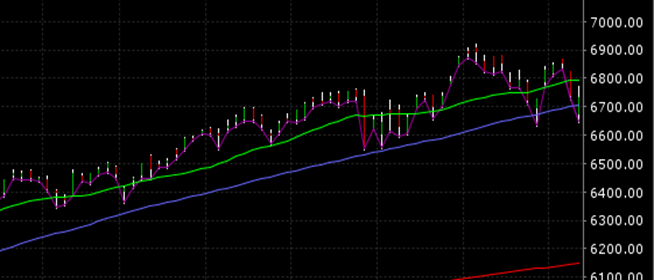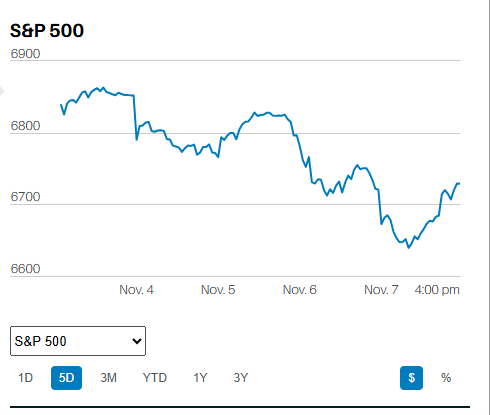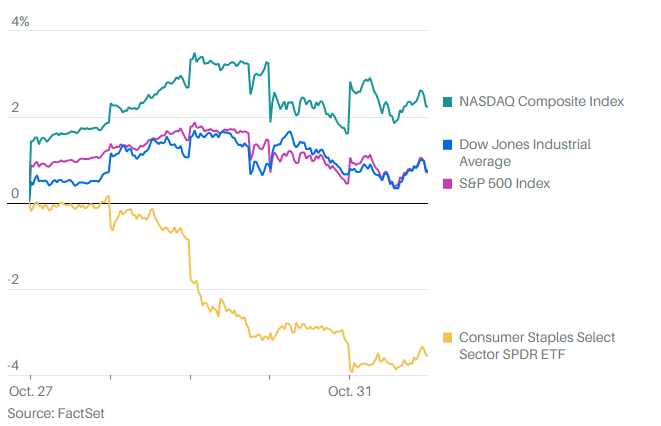
ANNUITIES ARE MISUNDERSTOOD INVESTMENTS
What's the annuity puzzle?
FROM THE BLEACHERS, VOL. 16
MARKET UPDATE
The S&P 500 is up about 61% over the last three years. However, it hasn’t really gone anywhere in over a year. The S&P 500 hit a high of 2873 on January 26th of 2018 before selling off sharply to a low in the vicinity of 2533 on February 9th of 2018. It did surpass its old high by late August of 2018 only to sell off again, more substantially, beginning in early October and culminating in the December 24th low at around 2347. Now the S&P 500 index is sitting at 2905, close to its all time high of 2941, but also basically where it was over a year ago. Technicians might be inclined to see a triple top that will eventually resolve itself as a bear market. They might be of a more bullish bent and see a period of healthy consolidation leading to an eventual breakout to the upside. Humans have long looked for portends of things to come in the entrails of animals, the flames of a campfire, the configuration of stars in the sky. Humans have also shown themselves to be impervious to facts, mostly incapable of changing their views when new facts emerge. Beliefs are rarely changed, preconceived notions almost never swayed. We know what we know because. . .well, because we know it.
The truth about patterns is that they are only patterns after they are created. What has come before doesn’t help us with what will come in the future. Fractal geometry appears to describe the patterns in nature far better than traditional geometry. Fractals are never ending irregular patterns that have the same degree of irregularity regardless of scale. What that means for measuring the coastline of the British Isles is that every measurement is merely an estimate, an estimate that changes as the scale of measurement changes; the same patterns occur in the stock market. Change the scale (time period) and you change the pattern. Look at a 2-year chart of the S&P 500 and you see perhaps a triple top forming. Look at a 10-year chart and you see an uptrend that includes what looks like a topping pattern of a bit more than a year from late 2014 until early 2016 but wasn’t. Is the last year of S&P 500 activity a topping pattern or merely the pause that refreshes?
The reality is that we are still waiting for the S&P 500 to resume its 10-year old bull market or begin the next bear market. No one really knows which will happen. Bonds are still indicating economic weakness, or at least slow growth. Corporate earnings are still expected to decline by 3.8% in Q1 and come in flat in Q2. On the other hand, the Atlanta Fed GDPNow forecast for Q1 was raised on Thursday to 2.8% and the Conference Board’s Index of Leading Economic Indicators increased by 0.4% in March, a level consistent with about 2.0% economic growth in 2019.
We remain in a high-risk environment and people with spending goals in the next five years or so should continue to view portfolio risk through the prism of those spending goals. However, no one should be making changes to their asset allocations based on a guess about when the next bear market will begin.
INVESTING IN ANNUITIES
Annuities are one of the most misunderstood investments in the universe of investments. They are contracts between you and an insurance company. They are best used as a means of locking in a guaranteed amount of cash flow for a guaranteed period. The annuity puzzle was first identified by an Israeli economist named Menachem Yaari in the 1960s. The key problem dealt with by income annuities purchased at retirement is longevity risk – the risk of outliving your assets. The risk is increasing as life expectancies continue to rise. Moreover, the distribution of longevity is wide – a 22 year difference between the 10th and 90th percentile with men and a 23-year difference with women. Income annuities hedge longevity risk simply and efficiently as risk pooling makes them 25-40 percent cheaper than do-it-yourself options, according to Benartzi, Thaler, and Previtero in a paper published in the Journal of Economic Perspectives in the fall of 2011. As Benartzi, Thaler, and Previtero point out in their paper, “You increase your consumption and eliminate risk at the same time … Who says there is no thing as a free lunch?” Income annuities work their magic in the same manner as any insurance product by spreading risk among many people. Specifically, some retirees will die prematurely, thus subsidizing those retirees who live longer than expected.
So what’s the annuity puzzle? Why so few people actually buy income annuities when they retire. We’ll write more about the annuity puzzle next week.
WARNING: Income annuities are extremely useful for locking in a guaranteed stream of income that allows retirees to spend more in retirement. Income annuities are a specific kind of fixed annuity. They should not be confused with variable annuities and other types of accumulation annuities that are typically expensive and very often fail to create as much wealth as one can create with a low cost, diversified portfolio of stocks, bonds, and real estate











